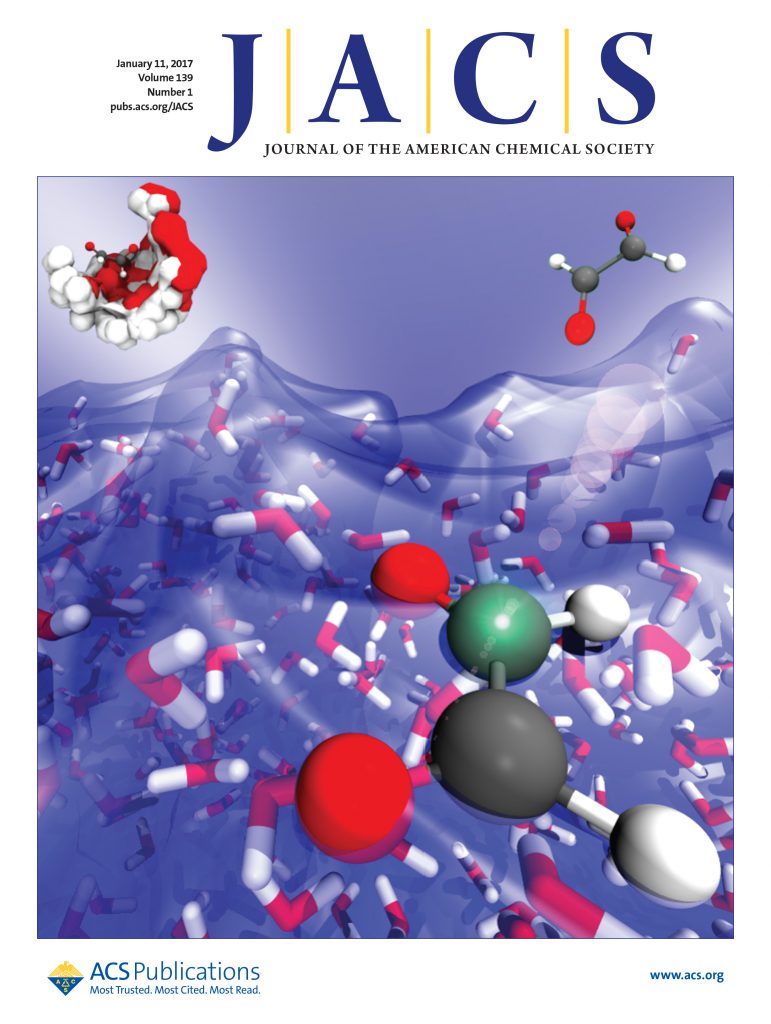用于膜蛋白天然质谱分析的异双头洗涤剂的设计与合成。
IF 14.4
1区 化学
Q1 CHEMISTRY, MULTIDISCIPLINARY
引用次数: 0
摘要
天然质谱法在表征膜蛋白的非共价相互作用方面发挥着核心作用,使人们能够发现调节膜蛋白功能和调节与其他分子相互作用的脂质。使用专门的减电荷洗涤剂和/或分子添加剂对于减轻原生质谱过程中的过度活化至关重要,以促进正确的分析。在这里,我们提出了设计和合成一类新的双头基洗涤剂具有两个不同的亲水基团。其中一个头基,精胺部分,被设计成促进膜蛋白的低电荷状态,从而增强了质谱仪中不稳定复合物的保存。另一种亲水性头基──麦芽糖或四乙二醇部分──通常存在于用于提取和增溶膜蛋白复合物的传统洗涤剂中。使用不同大小、拓扑结构和寡聚状态的膜蛋白,我们证明了这些新型双头基团洗涤剂表现出特殊的电荷还原特性,特别是当引入溶解在不同洗涤剂中的膜蛋白时。此外,我们强调了它们在保留g蛋白偶联受体与纳米体选择性结合其活性状态的复合物方面的有效性。总之,这些高性能洗涤剂促进了天然质谱洗涤剂的合理设计,扩大了在不同生化环境下研究膜蛋白的能力。本文章由计算机程序翻译,如有差异,请以英文原文为准。
Design and Synthesis of Hetero-Bicephalic Detergents for Native Mass Spectrometry of Membrane Proteins.
Native mass spectrometry is playing a central role in characterizing the noncovalent interactions of membrane proteins, enabling the discovery of lipids that regulate membrane protein function and modulate interactions with other molecules. The use of specialized charge-reducing detergents and/or molecular additives is critical to mitigate overactivation during native MS to facilitate proper analysis. Here, we present the design and synthesis of a new class of dual-headgroup detergents featuring two distinct hydrophilic moieties. One headgroup, the spermine moiety, is designed to promote lower charge states of membrane proteins, thereby enhancing the preservation of labile complexes in the mass spectrometer. The other hydrophilic headgroup─either a maltoside or a tetraethylene glycol moiety─is commonly found in traditional detergents used for the extraction and solubilization of membrane protein complexes. Using a diverse set of membrane proteins varying in size, topology, and oligomeric state, we demonstrate that these novel dual-headgroup detergents exhibit exceptional charge-reducing properties, particularly when introduced to membrane proteins solubilized in different detergents. Additionally, we highlight their effectiveness in preserving the complex of a G-protein-coupled receptor with a nanobody that selectively binds to its active state. Collectively, these high-performance detergents advance the rational design of detergents for native MS and expand the capabilities for studying membrane proteins in diverse biochemical environments.
求助全文
通过发布文献求助,成功后即可免费获取论文全文。
去求助
来源期刊
CiteScore
24.40
自引率
6.00%
发文量
2398
审稿时长
1.6 months
期刊介绍:
The flagship journal of the American Chemical Society, known as the Journal of the American Chemical Society (JACS), has been a prestigious publication since its establishment in 1879. It holds a preeminent position in the field of chemistry and related interdisciplinary sciences. JACS is committed to disseminating cutting-edge research papers, covering a wide range of topics, and encompasses approximately 19,000 pages of Articles, Communications, and Perspectives annually. With a weekly publication frequency, JACS plays a vital role in advancing the field of chemistry by providing essential research.

 求助内容:
求助内容: 应助结果提醒方式:
应助结果提醒方式:


